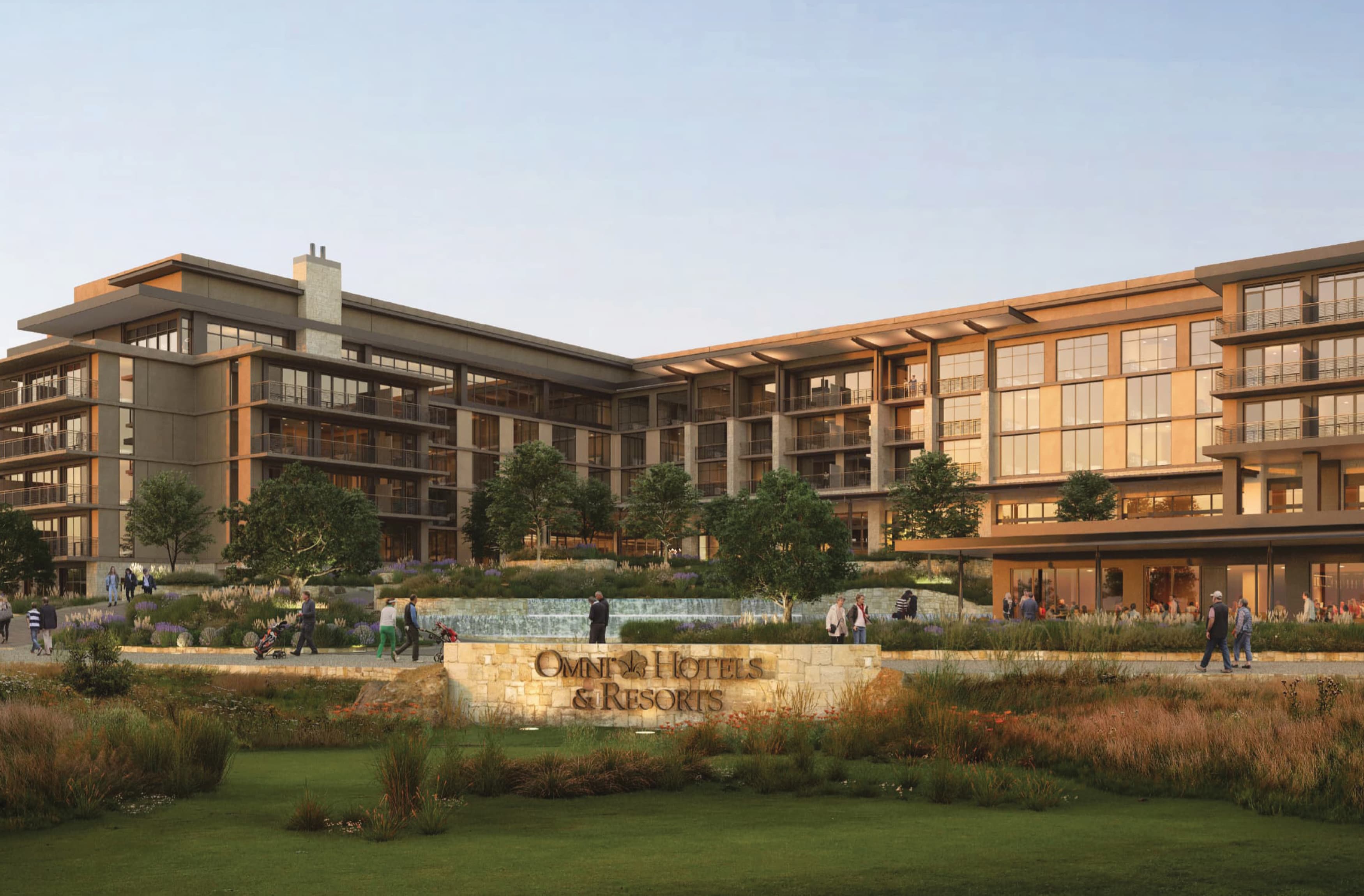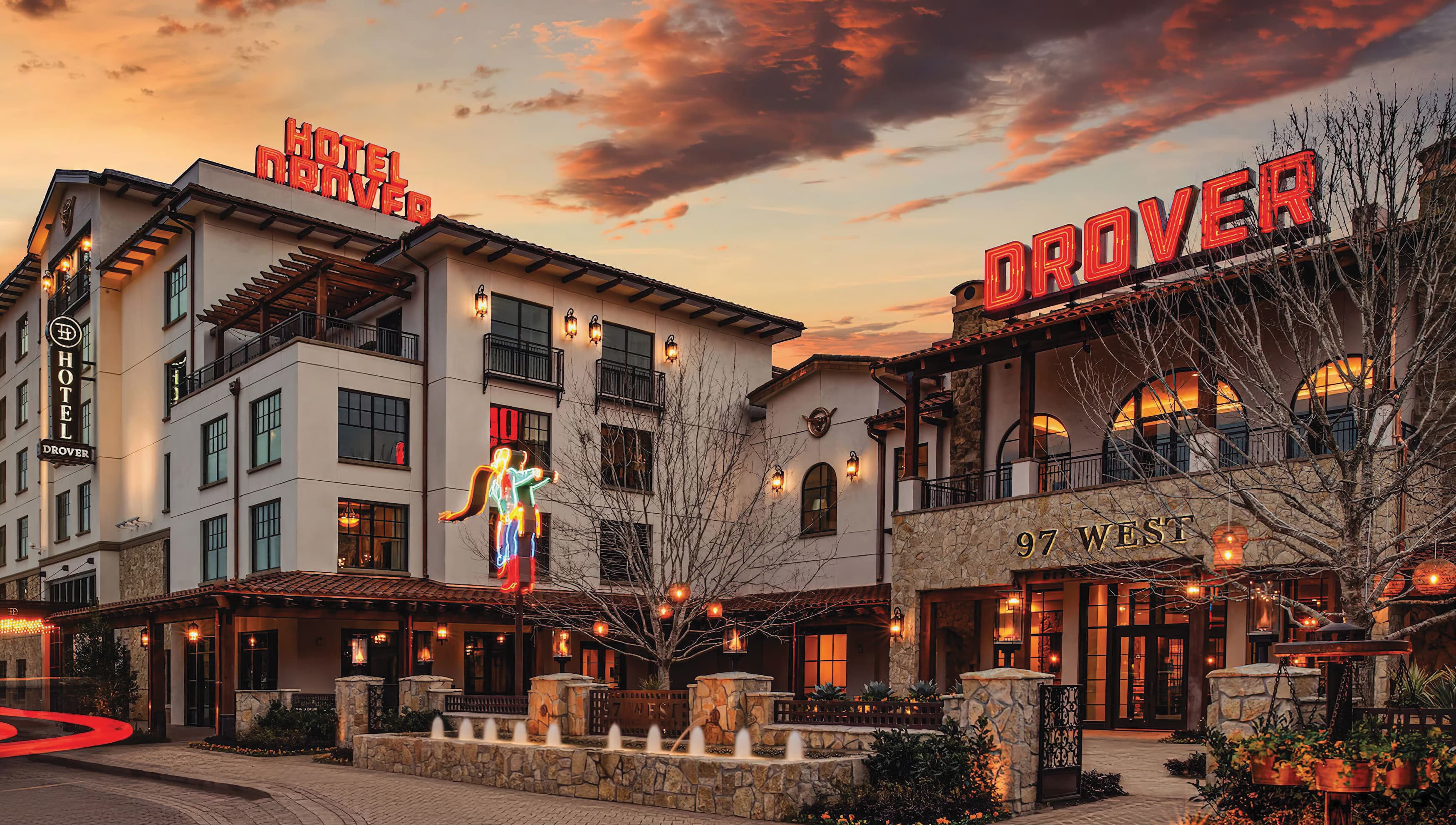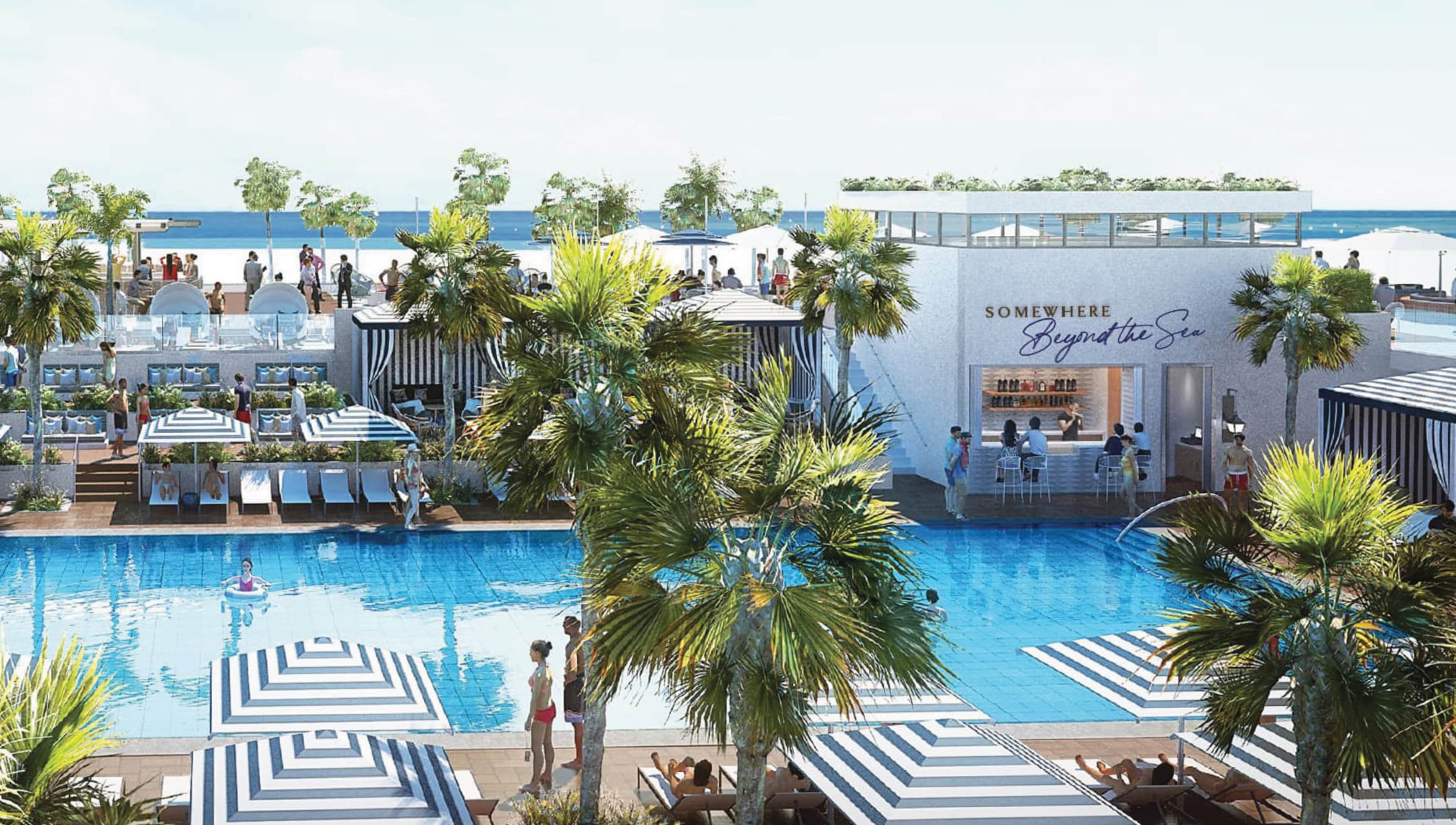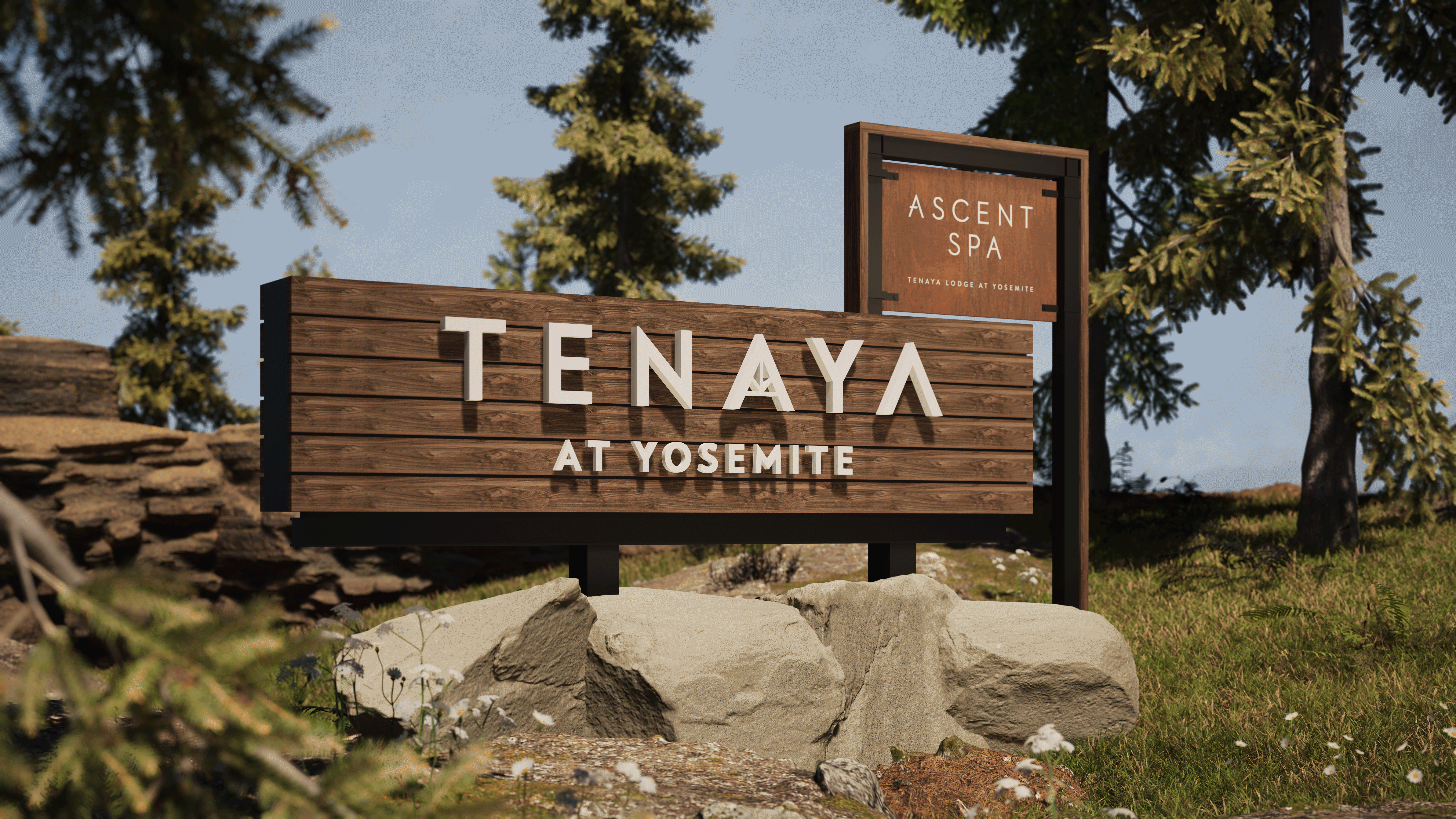February 18, 2025
Creating Destinations: Hotels & Resorts

February 18, 2025

WHAT IS A DESTINATION HOTEL AND WHAT MAKES IT DIFFERENT?
A destination hotel is a destination in and of itself, drawing guests with its location, programming, and design. Based on our years of experience designing hospitality destinations, RSM Design explores how a destination hotel can reinforce the unique experience throughout the entire guest journey.
Hotels have transformed from basic accommodations into experiential destinations that capture imaginations and create lasting memories. A destination hotel or resort stands apart through its ability to become the focal point of a guest's journey rather than simply a base for exploring elsewhere. These properties pull guests in through magnetic combinations of location, programming, and design that work in harmony to craft unforgettable stays.
"Destination hotels and resorts require a holistic approach to design that considers every touchpoint of the guest experience," explains Harry Mark, FAIA, Principal at RSM Design. "The property needs to tell a cohesive story from the moment guests arrive through every interaction during their stay."
Guests choose destination properties because they offer complete experiences. Whether perched on a clifftop overlooking the ocean or integrated into a vibrant cultural district, these properties provide unique amenities and authentic connections to their surroundings.

Hotel Drover, Fort Worth, Texas
When we think of destination resorts and hotels, there are several key components that make them destinations in their own right, including location, programming, and design. At RSM Design, we incorporate a property’s unique location and setting into its architecture and design to enhance the guest experience.
LOCATION AND SETTING
The foundation of any destination property lies in its setting. Exceptional locations feature unique geographical elements, such as beachfront expanses, mountain vistas, or urban landmarks. These properties maximize their surroundings through thoughtful orientation and design that frames their natural beauty.
Access to nearby attractions enhances the appeal, but destination properties become attractions themselves. They integrate with local cultural sites, entertainment districts, and natural wonders while maintaining their own magnetic pull.
ARCHITECTURE AND DESIGN
Distinctive architecture sets the stage for memorable stays. Whether drawing inspiration from local building traditions or making bold contemporary statements, the design should feel authentic to its location while offering fresh perspectives. Suzanne Redmond Schwartz, Principal at RSM Design, notes, "When we approach destination properties, we focus on creating graphic connections with architecture that feel authentic to the place."
Successful properties integrate harmoniously with their surroundings through careful consideration of scale, materials, and sight lines. The relationship between indoor and outdoor spaces creates natural flow while maximizing views and environmental conditions. According to Suzanne, "The environmental graphics should enhance the architectural vision while making navigation intuitive for guests."
While location, programming, and design are the essential building blocks of a destination hotel or resort, there are numerous ways that these properties should reinforce the destination experience throughout a guest’s stay.
ARRIVAL EXPERIENCE
First impressions begin long before check-in. The arrival sequence guides guests from their first glimpse of the property through a carefully choreographed journey. Critical components of the arrival experience include:
Cohesive Wayfinding: From monument signs that establish a guest’s first impression of the hotel to strategic wayfinding elements throughout the property, architectural graphics should guide guests confidently from their initial approach through check-in. Each touchpoint connects to tell the hotel or resort’s unique story while helping to orient and direct guests.
Intuitive Navigation: A comprehensive wayfinding strategy considers all arrival scenarios, whether by car or on foot. Clear directional systems, identity signage, and architectural landmarks work in concert to orient guests naturally through the space, reducing stress and enhancing their overall experience.
Branded Environment: Environmental graphics weave the hospitality brand throughout the guest journey, from dramatic entry features to refined interior wayfinding. Materials, typography, and artistic elements come together to craft moments that reflect the property's character while meeting its functional needs.
"First impressions set the tone for the entire guest experience," says Cody Clark, Principal at RSM Design. "The arrival sequence needs to build anticipation while providing clear direction. Through thoughtful integration of signage and environmental graphics, we can create moments of discovery that become part of the property's identity."

Hotel Del Coronado, San Diego, California
NAVIGATION AND WAYFINDING
Intuitive wayfinding throughout the property allows guests to explore confidently. A few key considerations are:
Universal symbols and multiple languages on signage can ensure clear communication for international travelers.
Digital kiosks and signs allow properties to provide up-to-date information while maintaining design integrity.
Refined branding creates visual consistency throughout the guest journey.
From room numbers to directional markers, identification placards, restaurant signs, and more, each element contributes to the broader narrative while serving essential functions.


St. Regis Longboat Resort, Longboat Key, Florida (left) and CW Prime at St. Regis Longboat Resort, Longboat Key, Florida (right)
PLACEMAKING STRATEGIES
The most successful destination resorts and hotels tap into a deep, authentic sense of place. They intertwine with the local community through placemaking design that encourages guests to feel engaged, connected, and inspired.
In hotels and resorts, memorable spaces spur social interaction and photo opportunities without feeling contrived. Whether through commissioned art installations, innovative lighting, or interactive elements, these moments become part of the property's identity.
VISUAL ELEMENTS
To truly create an immersive experience, it is important to engage guests across multiple senses. Visual impact unfolds through intentional design choices at all scales, from soaring lobby spaces with dramatic water features to hand-carved wooden details.
Environmental graphics can flow through spaces in delightful and surprising ways, such as custom patterns inspired by local artisans etched into glass panels. Public art creates moments of discovery, whether it is a commissioned mural telling the hotel’s story or an interactive light installation in a garden encouraging guests to stop and socialize. Subtle wayfinding cues like backlit room numbers that glow softly in evening hours help guide guests effortlessly.
The result is an environment where every detail contributes to the sense of place, inviting guests to explore and engage with the property.

Tenaya at Yosemite, Yosemite, California
A true destination hotel or resort creates memories that guests carry with them long after their stay. Through careful integration of branding, environmental graphic design, wayfinding, public art, and placemaking elements, RSM Design creates hospitality destinations that transform their guests, inspiring return visits.